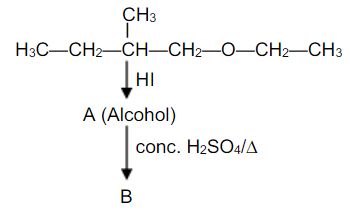List out some major proteins and their function ?
Step-by-Step Solution:
1. Identify Major Proteins: Proteins can be categorized based on their functions in the body. Some major proteins include enzymes, transport proteins, hormones, structural proteins, defense proteins, and storage proteins.
2. List of Major Proteins and Their Functions:
- Enzymes:
- Amylase: Breaks down carbohydrates; found in saliva.
- Lipase: Digests fats; present in the digestive system.
- Pepsin: Digests proteins; found in the stomach.
- Trypsin: Further digests proteins in the small intestine.
- Transport Proteins:
- Hemoglobin: Transports oxygen in the blood.
- Albumin: Maintains osmotic pressure and transports various substances in the blood.
- Hormones:
- Insulin: Regulates blood glucose levels.
- Thyroxine: Regulates metabolism.
- Structural Proteins:
- Actin: Involved in muscle contraction and cell movement.
- Tubulin: Forms microtubules, important for cell shape and division.
- Keratin: Provides structure to hair, nails, and skin.
- Defense Proteins:
- Immunoglobulins: Antibodies that help in immune response.
- Storage Proteins:
- Albumin: Also serves as a storage protein in egg whites.
- Legume Storage Proteins: Found in legumes, providing nutrients during seed germination.
3. Summarize: Proteins play various roles in the body, including catalyzing biochemical reactions, transporting molecules, regulating physiological processes, providing structural support, defending against pathogens, and storing nutrients.
- Enzymes:
- Amylase: Breaks down carbohydrates; found in saliva.
- Lipase: Digests fats; present in the digestive system.
- Pepsin: Digests proteins; found in the stomach.
- Trypsin: Further digests proteins in the small intestine.
- Transport Proteins:
- Hemoglobin: Transports oxygen in the blood.
- Albumin: Maintains osmotic pressure and transports various substances in the blood.
- Hormones:
- Insulin: Regulates blood glucose levels.
- Thyroxine: Regulates metabolism.
- Structural Proteins:
- Actin: Involved in muscle contraction and cell movement.
- Tubulin: Forms microtubules, important for cell shape and division.
- Keratin: Provides structure to hair, nails, and skin.
- Defense Proteins:
- Immunoglobulins: Antibodies that help in immune response.
- Storage Proteins:
- Albumin: Also serves as a storage protein in egg whites.
- Legume Storage Proteins: Found in legumes, providing nutrients during seed germination.
Topper's Solved these Questions
- BiomoleculesBOOK - CBSE COMPLEMENTARY MATERIALCHAPTER - BiomoleculesEXERCISE - Short Answer Questions -I
10 Videos
- ANIMAL KINGDOM BOOK - CBSE COMPLEMENTARY MATERIALCHAPTER - ANIMAL KINGDOM EXERCISE - SHORT ANSWER QUESTIONS-II (3 MARKS EACH)
1 Videos
- BODY FLUIDS AND CIRCULATIONBOOK - CBSE COMPLEMENTARY MATERIALCHAPTER - BODY FLUIDS AND CIRCULATIONEXERCISE - Long Answer Questions
4 Videos
Similar Questions
Knowledge Check
Proteins function as
Astructural elementsBbiocatalystsCmain energy sourceDgenetic materialFind out major product:
 A
A B
B C
C DNo reaction
DNo reactionFunctional proteins is
AEnzymeBCollagenCosseinDVitamin.
List the raw materials and its functions involved in protein synthesis.
View SolutionList the function of relaxin.
View SolutionList three functions of food.
View SolutionMake a list of macronutrients and mention their major functions.
View SolutionProteins perform many physological functions. For example, some proteins function as enzymes. One of the following represents an additional function that some proteins perform
View Solution


